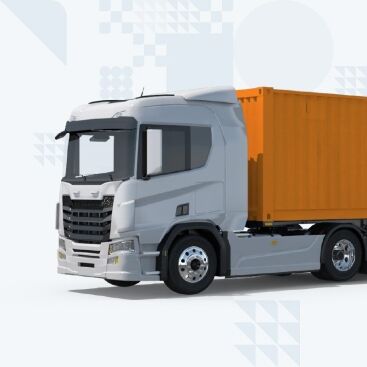3PL strategies to drive growth from reshoring, nearshoring, Section 321, and other policy changes
As cross-border trade policies continue to evolve, customers grapple with reshoring, nearshoring, and other strategies to cope with emerging changes such as Section 321 (the de minimis provision). Savvy US-based 3PLs are positioned to benefit from these changes, which are spurring a rapid migration of brands back to US-based fulfillment operations. Modernizing 3PL fulfillment in your operations now strategically positions your business to help brands navigate their logistics strategies with a trusted partner.
Explore advanced 3PL software and learn why Deposco is the top choice for rapidly evolving supply chain operations.
Understanding Section 321 and its impact
Section 321 of the Tariff Act of 1930 provides businesses a cost-effective way to import goods into the US by allowing duty-free importation for shipments valued under $800, with reduced paperwork and streamlined border crossing. (Be sure to check for the most current WTO Tariff & Trade data).
Many companies established operations in Mexico specifically to leverage these provisions. However, as one of our 3PL customers noted in a recent advisory board: “The Mexico-Canada stuff is, ultimately, very favorable to US-based 3PLs. Section 321 will likely see significant changes or limitations, which means companies are forced to come back here all of a sudden.”
Reshoring and the rush back north
Potential diminishing of Section 321 benefits is eliminating the cost advantage that once made nearshoring and cross-border operations attractive, pushing brands to reconsider their logistics strategy. Immediate reshoring shifts like this create both opportunity and challenges, as brands urgently seek new 3PL solutions to enable agility: “We’ve already had a ton of inbound interest. People are saying, ‘Hey, I have to move like yesterday.'”
Get expert guidance to ensure a successful, agile growth path. Schedule a free strategy session with Deposco’s Team today!
Five 3PL strategies to help your customers adapt
Whether your customers are looking to reshore or nearshore, tap into a new service, or compete in new markets, start by assessing the readiness of your warehouse management system:
1. Evaluate compliance complexities
Transform compliance hurdles into value-added services by:
- Developing expertise in Section 321 and cross-border transition requirements
- Creating standardized processes for duty and tax calculations
- Implementing granular traceability for inventory, 3PL shipping, and labeling
- Evaluate your warehouse complexity in general; maybe it’s time to upgrade those rigid, disconnected fulfillment systems that hold you back?
Learn why delaying warehouse technology upgrades is risky.
Evaluate your warehouse management software maturity over 10 key dimensions. Compare your score to industry benchmarks, discover which technologies could maximize ROI for your operation, based on your specific challenges.
2. Streamline your onboarding process
Reshoring and other customer decisions must be executed on quickly. Most legacy fulfillment systems take months or longer to get new capabilities up and running. That’s just not fast enough. Deposco provides a prescriptive framework that compresses onboarding for new clients to a matter of hours through:
- Templated implementation processes
- Accelerated training programs for client self-service
- Scalable WMS configurations
After implementing Deposco, 3PL provider Derby Supply Chain Solutions, a now onboards new ecommerce customers in less than two hours. In addition, they realized 77% faster order processing times and an 86% reduction in billing time.
3. Invest in integration flexibility
A seamlessly integrated WMS+OMS is critical to handling diverse technical requirements. Other customers during our panel emphasized: “From a sales perspective, the interface is more important than the technology. When you can tell a customer ‘I can bring you live next week,’ that’s very helpful to us.”
An adaptable supply chain platform like Deposco leverages 3PL integrations to enable:
- Quick connections to 150+ API client platforms
- Rapid data mapping and file transfers
- New integrations in under 90 days
- Easy addition of key OMS capabilities to your WMS without platform overhaul
Try our Order Management System Calculator! Input your unique business requirements across multiple areas and see potential savings instantly!
4. Leverage multi-location advantages
Make sure your fulfillment platform can support both US-based and nearshored fulfillment options as they navigate changing regulations in a multichannel environment: “We also have a lightweight operation in Canada. Having a unified 3PL WMS that can support customer operations wherever they are brings a unique differentiator.”
A Modern OMS System gives you an extra degree of confidence, speed, and savings in meeting your customer’s rapidly evolving expectations.
5. Measure ROI consistently
Establish good ROI metrics during rapid relocation or reshoring, focusing on:
- Time to operational stability
- Cost delta analysis
- Customer experience impact
- Inventory carrying costs
- Strategic flexibility
- Compliance cost reduction
- Technology integration efficiency
Conclusion
Changes to Section 321 create significant opportunities for US-based 3PLs, but success depends on your ability to onboard and embrace change as often as it happens. When brands need to move “like yesterday,” 3PLs that can respond with “we can have you live next week” will win in this market shift – and all future ones.
What’s your technology readiness
Before rushing to capture reshoring brands, assess your technological capabilities. Can your WMS handle rapid onboarding? How easily can you integrate with diverse customer systems? Does your platform provide the granular visibility transitioning brands demand? Can you quickly adapt to evolving compliance requirements? Are you operating with a true technology partner or just a software vendor?
